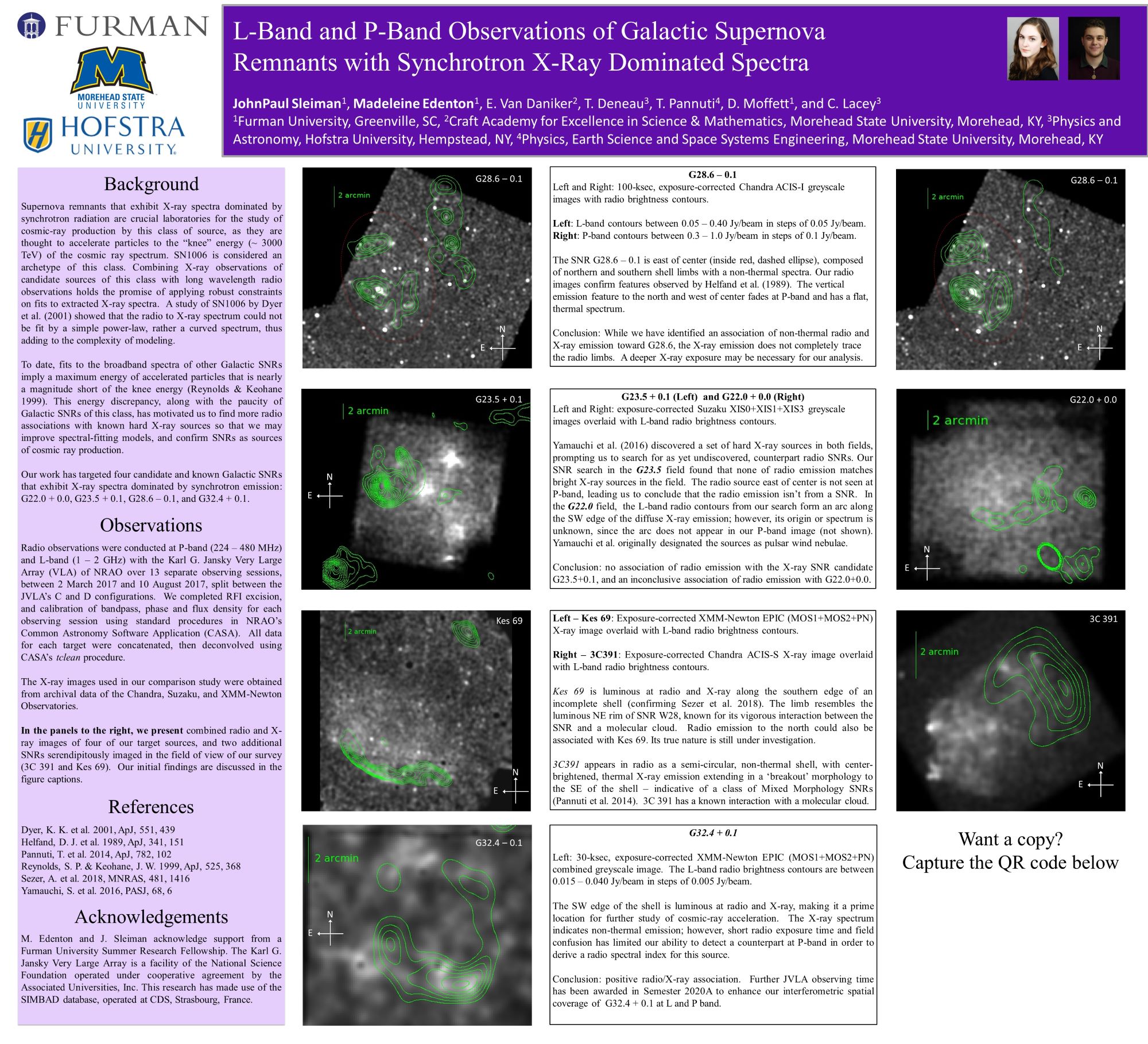Abstract or Description
Supernova remnants that exhibit X-ray spectra dominated by synchrotron radiation are crucial laboratories for the study of cosmic-ray production by this class of source, as they are thought to accelerate particles to the “knee” energy (~3000T eV) of the cosmic ray spectrum. SN1006 is considered an archetype of this class. Combining X-ray observations of candidate sources of this class with long wavelength radio observations holds the promise of applying robust constraints on fits to extracted X-ray spectra. A study of SN1006 by Dyer et al. (2001) showed that the radio to X-ray spectrum could not be fit by a simple power-law, rather a curved spectrum, thus adding to the complexity of modeling.
To date, fits to the broadband spectra of other Galactic SNRs imply a maximum energy of accelerated particles that is nearly a magnitude short of the knee energy (Reynolds & Keohane 1999). This energy discrepancy, along with the paucity of Galactic SNRs of this class, has motivated us to find more radio associations with known hard X-ray sources so that we may improve spectral-fitting models, and confirm SNRs as sources of cosmic ray production.
Our work has targeted four candidate and known Galactic SNRs that exhibit X-ray spectra dominated by synchrotron emission: G22.0+0.0, G23.5+0.1, G28.6–0.1, and G32.4+0.1.
